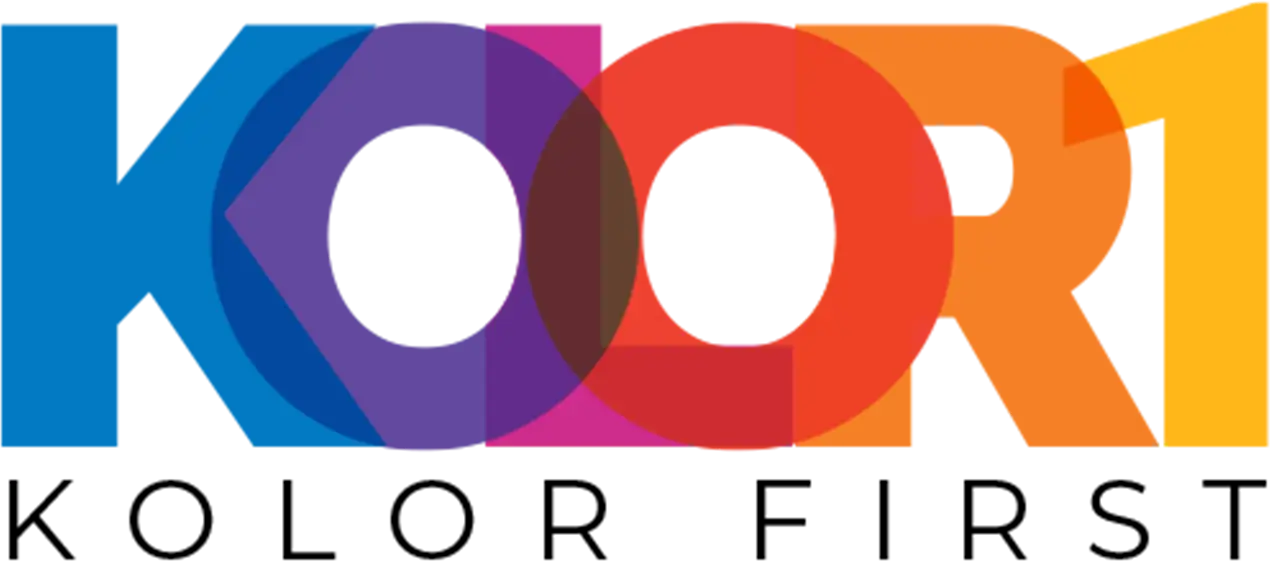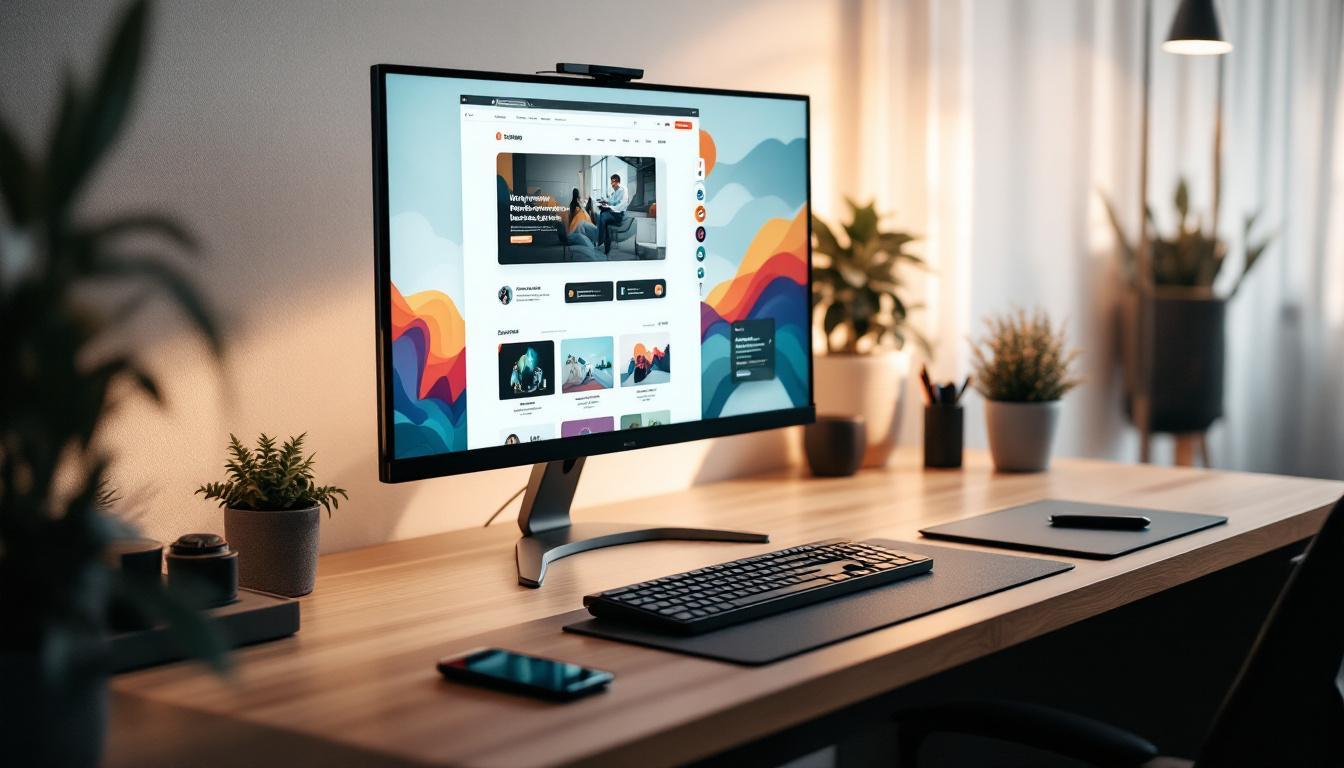The web design industry is constantly evolving, with new players entering the market and established companies innovating to stay ahead. At Kolorfirst LLC, we’ve seen firsthand how the landscape has changed over the years.
In this post, we’ll explore the largest web design companies that are leading the industry today. We’ll also dive into the criteria for evaluating these top players and examine emerging trends shaping the future of web design.
How to Evaluate Top Web Design Companies
Assess Their Portfolio
Start by examining the company’s portfolio. Look for diversity in design styles and industries served. A good portfolio should showcase the company’s ability to create visually appealing and functional websites across various sectors. Pay attention to the user interface (UI) and user experience (UX) of their featured projects.
Check Client Feedback
Client testimonials and case studies provide valuable insights into a company’s performance. Look for detailed feedback that discusses not just the final product, but also the company’s communication, project management, and ability to meet deadlines. Case studies should demonstrate measurable results (such as increased traffic or improved conversion rates).
Look for Industry Recognition
Awards and recognition from reputable industry organizations can indicate a company’s expertise and innovation. These awards recognize and promote the talent and effort of the best developers, designers and web agencies in the world. However, don’t let sheer numbers alone sway you. Investigate the specific awards and their significance within the industry.
Evaluate Service Offerings
Top web design companies often provide a comprehensive range of services beyond just design. This might include web design, development, content creation, and SEO. A company that offers a full suite of services can become a valuable long-term partner for your business.
Consider Pricing and Value
While it’s tempting to choose the lowest price, in web design, you often get what you pay for. Look for companies that offer transparent pricing and can clearly explain the value they provide. Some companies offer customized packages to ensure you receive exactly what you need (without paying for unnecessary extras).
The right web design company for your business will depend on your specific needs and goals. Take the time to thoroughly evaluate potential partners using these criteria. As you move forward in your search, you’ll want to explore some of the leading web design companies in the industry. Let’s take a closer look at who’s making waves in the world of web design.
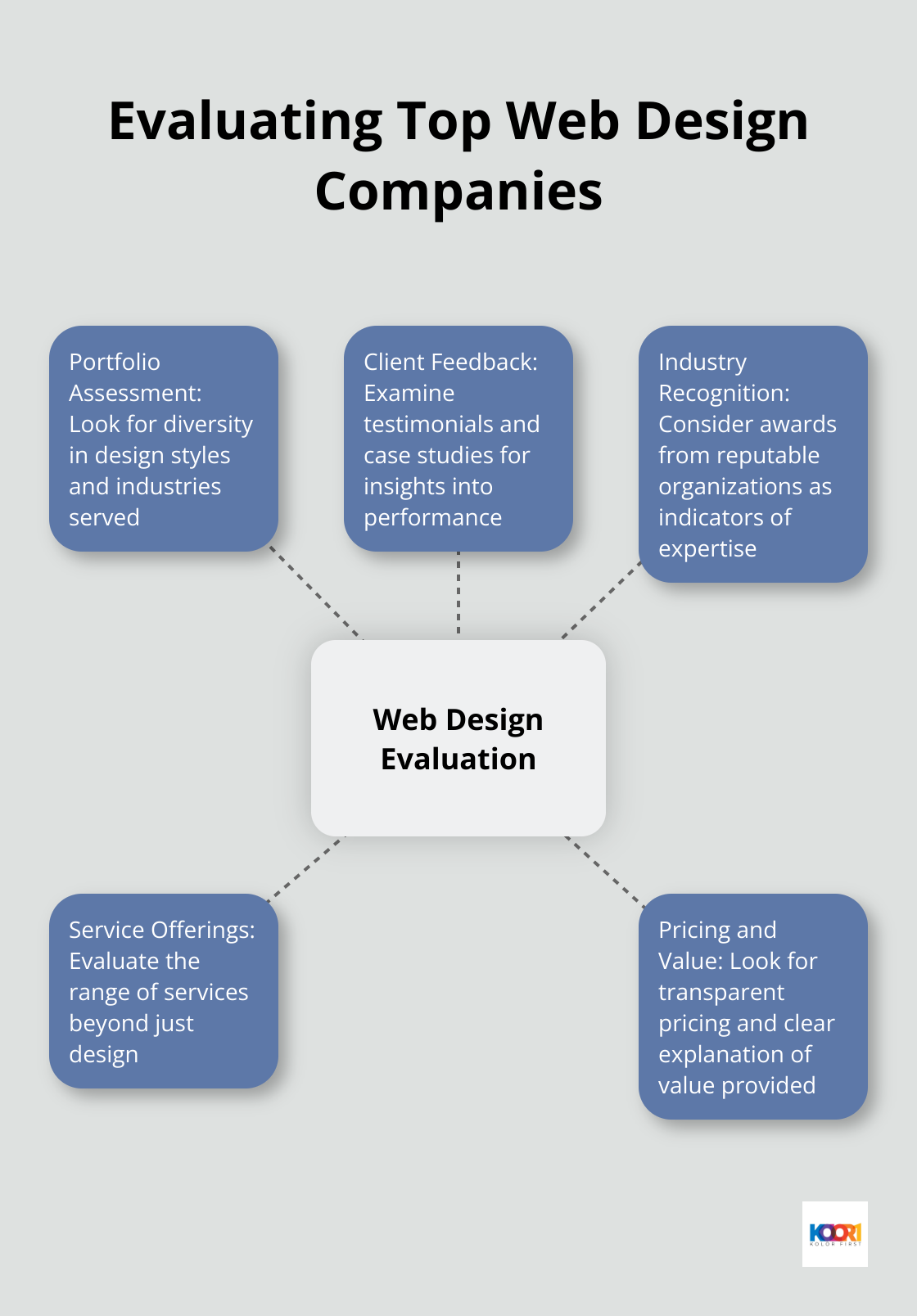
Who Leads the Industry in Web Design?
The web design industry thrives with competition and innovation. Several companies stand out for their unique approaches and comprehensive solutions. Let’s explore some of the industry leaders and what sets them apart.
Wix: The DIY Design Pioneer
Wix has transformed the web design landscape by offering a user-friendly platform for professional-looking websites. Their drag-and-drop interface and extensive template library make web design accessible to small businesses and individuals without coding experience. Wix’s success speaks volumes, with 200 million users worldwide.
Squarespace: Where Beauty Meets Function
Squarespace has carved a niche for businesses and creatives who seek sleek, modern designs. Their platform boasts visually stunning templates and an intuitive content management system. This focus on aesthetics has paid off handsomely, with Squarespace reporting a 28% year-over-year increase in revenue in 2022.
Webflow: Advanced Design for the Masses
Webflow caters to designers who demand more control and advanced capabilities. Their platform enables complex animations and interactions without extensive coding knowledge. This approach has struck a chord with the design community, propelling Webflow to a valuation of $4 billion in 2022.
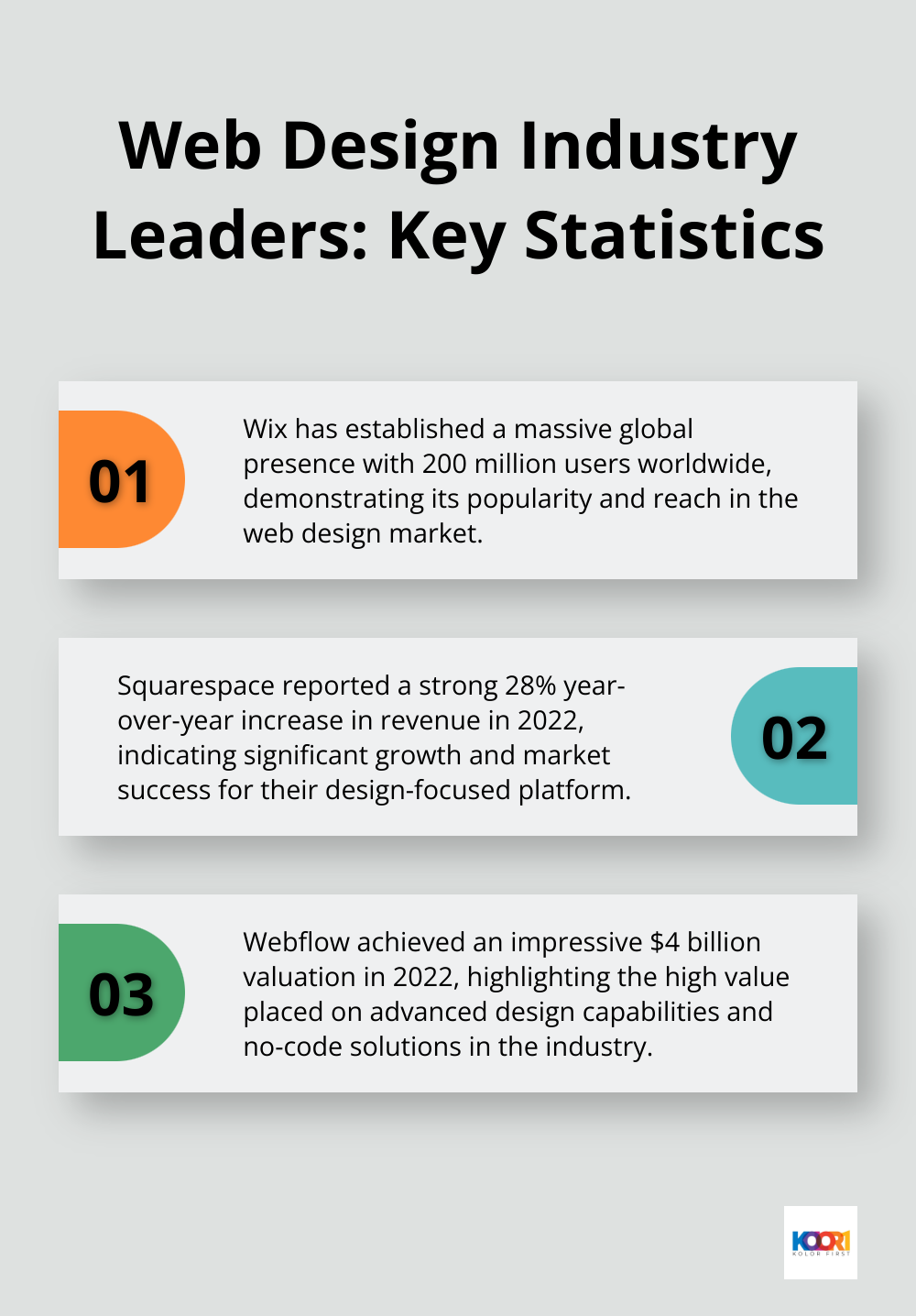
Adobe: The Creative Titan
Adobe’s suite of creative tools (including Dreamweaver and Adobe XD) remains a staple for professional web designers. Their integration of AI-powered features, like Adobe Sensei, sets new standards for efficiency in web design workflows. Adobe’s dominant position in the creative software market is evident in their record $17.61 billion revenue for the fiscal year 2022.
KolorFirst LLC: Tailored Solutions for Brand Success
KolorFirst LLC delivers innovative branding and digital marketing solutions. The agency combines creative branding, digital marketing expertise, UX consulting, and print solutions to craft unique brand identities and enhance online presence. KolorFirst LLC focuses on delivering measurable growth and exceptional results for clients, setting it apart in the competitive advertising landscape.
As businesses increasingly recognize the importance of a strong online presence, the demand for professional web design services continues to grow. The web design services market in the US is projected to reach $47.4 billion by 2025 (according to IBISWorld), indicating ample opportunities for both established players and emerging companies.
The web design industry’s rapid evolution doesn’t stop with these leaders. New trends and technologies constantly emerge, shaping the future of web design. Let’s explore some of these exciting developments in the next section.
What’s Next in Web Design?
The web design landscape continues to evolve, driven by technological advancements and changing user preferences. Let’s explore some of the most impactful trends shaping the future of web design.
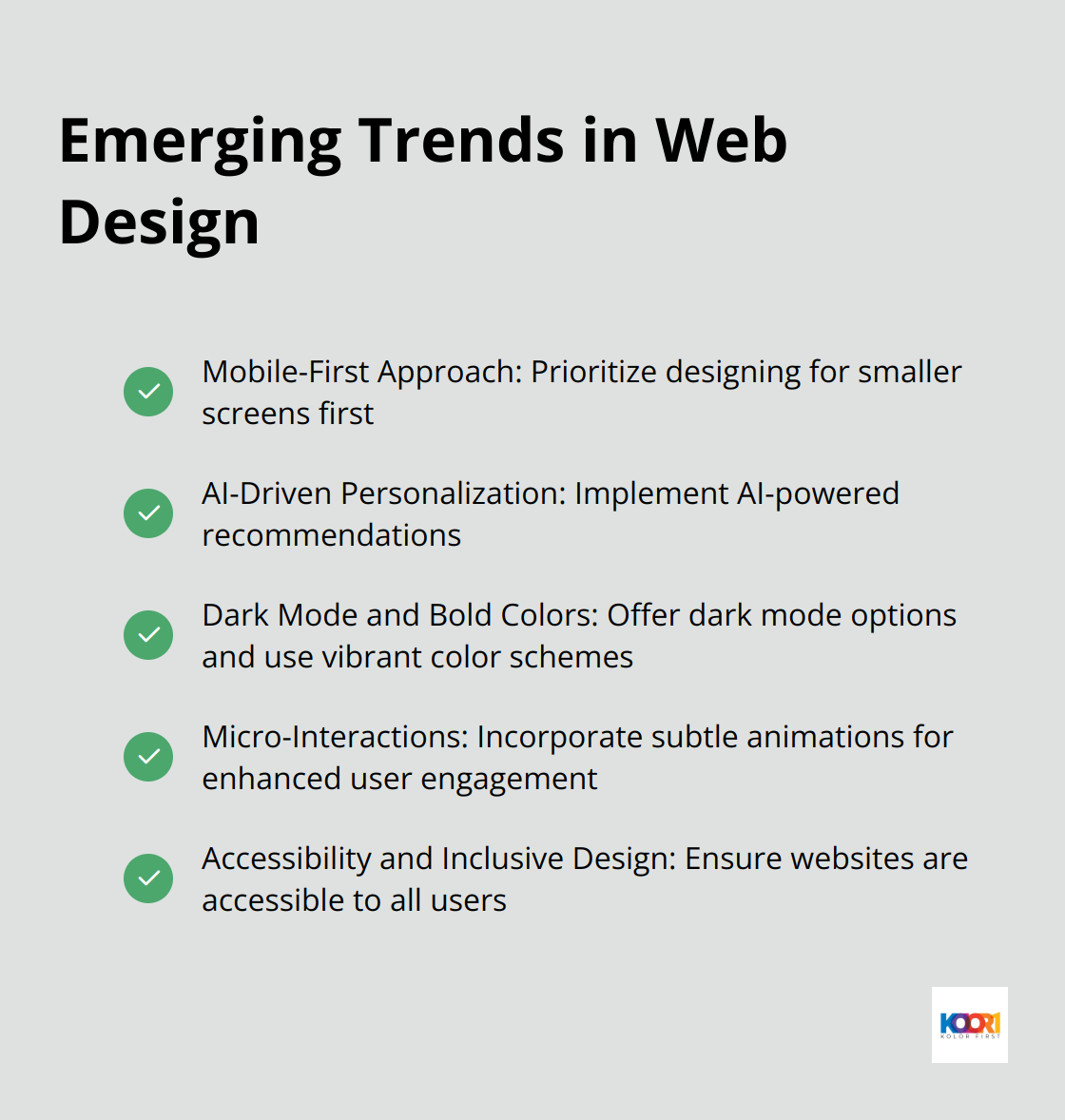
Mobile-First Approach
Mobile-first indexing is a concept that emphasizes the importance of optimizing websites for mobile devices. If your website is not optimized for mobile, it could negatively impact your SEO performance. This approach prioritizes designing for smaller screens first and then scaling up for larger devices.
To implement a mobile-first strategy:
- Prioritize content and simplify navigation
- Use responsive images that adapt to different screen sizes
- Ensure touch targets are large enough for easy interaction on small screens
Tools like Google’s Mobile-Friendly Test help assess and improve a site’s mobile performance.
AI-Driven Personalization
AI-powered product recommendations can boost conversion rates in e-commerce. These strategies can be applied to both anonymous and known visitors in today’s digital world.
Dark Mode and Bold Color Schemes
Dark mode has gained popularity due to its energy-saving benefits and reduced eye strain in low-light conditions. Many major platforms (including Twitter and Instagram) now offer dark mode options. Implementing a dark mode toggle improves user experience and accessibility.
Bold and vibrant color schemes are making a comeback. Pantone’s Color of the Year 2023, Viva Magenta, exemplifies this trend towards energetic and eye-catching hues. When incorporating bold colors, align them with your brand identity and maintain sufficient contrast for readability.
Micro-Interactions and Subtle Animations
Micro-interactions are small, functional animations that provide visual feedback to users. These subtle design elements enhance user engagement and make interfaces more intuitive.
Effective micro-interactions include:
- Button hover effects
- Progress bars
- Loading animations
When implementing these elements, focus on enhancing functionality rather than just adding visual flair. Tools like Adobe After Effects or Lottie help create smooth, lightweight animations for web use.
Accessibility and Inclusive Design
Web accessibility ensures your website reaches the widest possible audience. With over 1 billion people worldwide living with disabilities, designing for accessibility is not just a trend-it’s a necessity. Many countries have laws requiring digital accessibility, making it a legal imperative.
To improve accessibility:
- Ensure sufficient color contrast
- Provide alternative text for images
- Make your site keyboard-navigable
The Web Content Accessibility Guidelines (WCAG) provide a comprehensive framework for creating accessible websites. Tools like WAVE or aXe help identify and fix accessibility issues on your site.
Final Thoughts
The web design industry continues to evolve, with the largest web design companies setting new standards. These industry leaders offer unique strengths, from user-friendly platforms to comprehensive creative solutions. Businesses must choose the right web design partner to establish a strong online presence and achieve success in the digital realm.
The future of web design will focus on mobile-first approaches, AI-driven personalization, and accessibility considerations. As technology advances, we expect more innovative approaches to emerge, further enhancing digital interactions. Staying informed and adaptable will be essential for success in this rapidly changing landscape.
KolorFirst LLC stands ready to help businesses create compelling online experiences that resonate with their audience. We blend cutting-edge design trends with proven strategies to deliver websites that not only look stunning but also drive results. The most successful websites will seamlessly combine form and function, delivering value to users while achieving business objectives.

